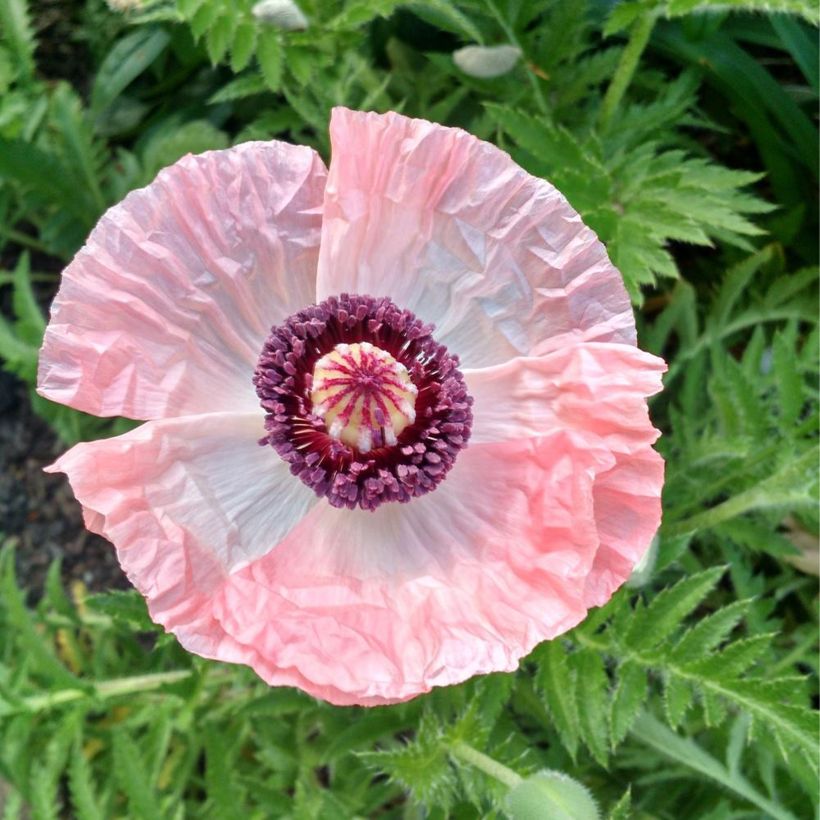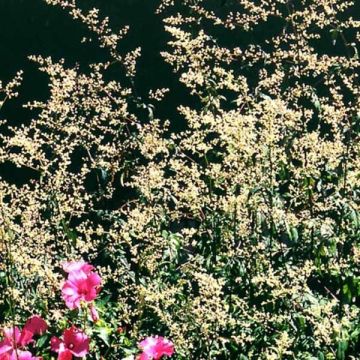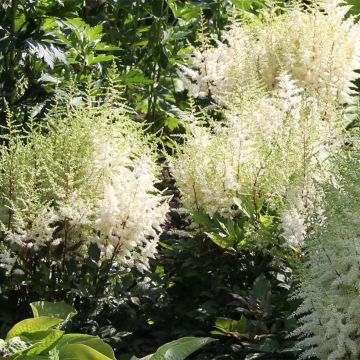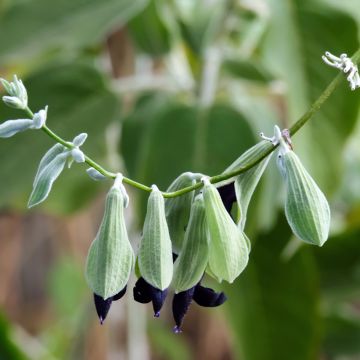Shipping country and language
Your country of residence may be:
Your country of residence is:
For a better user experience on our website, you can select:
Your shipping country:
Andorra
Austria
Belgium
Bulgaria
Canada
Chile
Croatia
Cyprus
Czechia
Denmark
Estonia
Finland
France
Germany
Greece
Hungary
Iceland
Ireland
Italy
Latvia
Lithuania
Luxembourg
Malta
Monaco
Netherlands
Poland
Portugal
Romania
Slovakia
Slovenia
Spain
Sweden
Switzerland
United Kingdom
We only deliver seed and bulb products to your country. If you add other products to your basket, they cannot be shipped.
Language:
French
German
Spanish
English
My Account
Hello
My wish lists
Plantfit
Log in / Register
Existing customer?
New customer?
Create an account to track your orders, access our customer service and, if you wish, make the most of our upcoming offers.


Papaver orientale Shasta - Oriental Poppy


Papaver orientale Shasta - Oriental Poppy
Papaver orientale Shasta - Oriental Poppy
Papaver orientale Shasta
Oriental Poppy
Order in the next for dispatch today!
Dispatch by letter from €3.90.
Delivery charge from €5.90 Oversize package delivery charge from €6.90.
More information
This item is not available in your country.
Schedule delivery date,
and select date in basket
This plant carries a 12 months recovery warranty
More information
We guarantee the quality of our plants for a full growing cycle, and will replace at our expense any plant that fails to recover under normal climatic and planting conditions.
From €5.90 for pickup delivery and €6.90 for home delivery
Express home delivery from €8.90.
From €5.90 for pickup delivery and €6.90 for home delivery
Express home delivery from €8.90.
Does this plant fit my garden?
Set up your Plantfit profile →
Description
The Papaver Orientale 'Shasta' presents an entirely new and particularly ornamental combination of colours. Of medium size, this perennial offers, in the second half of spring, large and beautiful white flowers or a very light pink. The semi-double petal corolla is adorned with a soft pink margin, and its black heart creates a beautiful contrast—a romantic flowering enhanced by the foliage's dark green background. Easy to grow in most well-drained soils, even dry in summer, this perennial is unmatched for brightening up a slope or a flower bed.
The Poppy or Papaver is a member of the Papaveraceae family, which includes 42 genera and 775 species, including many flowering beauties such as the Romneya coulteri, or Tree Poppy, a plant of impressive dimensions. The Oriental Poppy or Tournefort's Poppy is a perennial plant native to Asia Minor, introduced to France in the early 18th century. The botanical species grows from the Caucasus to Iran, passing through Turkey, where it forms perennial clumps, with the above-ground part dying in winter only to reappear in spring. Each wild plant develops a few hairy stems, which emerge from a compact tuft of dissected leaves, and each bears a solitary flower. The flower has a diameter of 10 to 15 cm (4 to 6in) and comprises 4 to 6 petals, primarily red, sometimes white, orange or lavender. Starting in late May, flowering is interrupted in July by the heat prevailing in these regions.
The Papaver orientale 'Shasta' is an original variety due to its colour, which is quite different from the warm, red, or orange colours that Poppies have accustomed us to. Indeed, it produces large pastel flowers, with semi-double corollas exceeding 10 cm (4in) in diameter. Their colour ranges from white to extremely pale pink, with the petals also bordered on the upper periphery by a margin of slightly darker pink. The black centre, formed by the reproductive floral parts, stamens and stigmas, sharply contrasts with the pale corolla, enhancing its beauty. Composed of a rosette of dark green, elongated, dissected and downy leaves, the vegetative clump reaches about thirty centimetres in height and width, or even more, and produces flowering stems that reach 50-60 cm (20-24in) in height in May and June. During the summer heat, the leaves dry up as the plant enters a resting phase, only to re-emerge in autumn. This should be considered, and nearby plants should be planned to take over and prevent a flower bed from appearing too bare.
The Oriental Poppy 'Shasta' will be equally at home in a simple cottage garden as it will be in a diverse flower bed alongside other plants. Its romantic flowers will blend well with those of the Rugosa Roses (Rosa rugosa), with their single or double flowers of natural beauty. The Nepeta x fassenii, a small perennial with a spreading habit, will also be a good companion, with its unpretentious profusion of small blue-violet flowers throughout the growing season. The Aster sibiricus, or Summer Aster, is a small perennial that will fill the gap left by your Poppy once it has finished flowering. Available in a wide range of colours regarding foliage and flowering, the Sedums (Sedum) will also allow you to have blooms throughout the summer in your flower bed.
Papaver orientale Shasta - Oriental Poppy in pictures


Flowering
Foliage
Plant habit
Safety measures
Botanical data
Papaver
orientale
Shasta
Papaveraceae
Oriental Poppy
Cultivar or hybrid
atteintescutaneomuqueuses
Cette plante peut provoquer l'apparition de réactions cutanées indésirables, une atteinte des yeux, ou des difficultés respiratoires si elle est ingérée.
Ne la plantez pas là où de jeunes enfants peuvent évoluer. Evitez tout contact avec la peau: privilégiez l'emploi de gants pour la manipuler. En cas de contact, lavez-vous soigneusement les mains et rincez abondamment à l'eau la zone concernée. Lavez les vêtements entrés en contact. En cas de réaction cutanée, contactez votre médecin ou le centre antipoison le plus proche de chez vous. En cas d'atteinte étendue ou de difficultés respiratoires, appelez immédiatement le 15 ou le 112.Pensez à conserver l'étiquette de la plante, à la photographier ou à noter son nom, afin de faciliter le travail des professionnels de santé.
Davantage d'informations sur https://plantes-risque.info
Planting and care
The 'Shasta' Oriental Poppy is a very hardy plant, it can withstand temperatures dropping as low as -20°C (-4°F). Like most poppies, it is easy to grow. Any type of soil is suitable, even limestone, as long as it is well-drained and sufficiently deep. This plant fears heavy waterlogged soils in winter. The soil must also be deep, so that its long, fleshy taproot can develop properly. Install it in full sun without fail. Remove faded flower stems and clean up old foliage during the summer, but be careful, wear gloves as the plant secretes a toxic white latex that can cause burns if it comes into contact with the eyes!
Planting period
Intended location
Care
This item has not been reviewed yet - be the first to leave a review about it.
Summer flowering perennials
Haven't found what you were looking for?
Hardiness is the lowest winter temperature a plant can endure without suffering serious damage or even dying. However, hardiness is affected by location (a sheltered area, such as a patio), protection (winter cover) and soil type (hardiness is improved by well-drained soil).

Photo Sharing Terms & Conditions
In order to encourage gardeners to interact and share their experiences, Promesse de fleurs offers various media enabling content to be uploaded onto its Site - in particular via the ‘Photo sharing’ module.
The User agrees to refrain from:
- Posting any content that is illegal, prejudicial, insulting, racist, inciteful to hatred, revisionist, contrary to public decency, that infringes on privacy or on the privacy rights of third parties, in particular the publicity rights of persons and goods, intellectual property rights, or the right to privacy.
- Submitting content on behalf of a third party;
- Impersonate the identity of a third party and/or publish any personal information about a third party;
In general, the User undertakes to refrain from any unethical behaviour.
All Content (in particular text, comments, files, images, photos, videos, creative works, etc.), which may be subject to property or intellectual property rights, image or other private rights, shall remain the property of the User, subject to the limited rights granted by the terms of the licence granted by Promesse de fleurs as stated below. Users are at liberty to publish or not to publish such Content on the Site, notably via the ‘Photo Sharing’ facility, and accept that this Content shall be made public and freely accessible, notably on the Internet.
Users further acknowledge, undertake to have ,and guarantee that they hold all necessary rights and permissions to publish such material on the Site, in particular with regard to the legislation in force pertaining to any privacy, property, intellectual property, image, or contractual rights, or rights of any other nature. By publishing such Content on the Site, Users acknowledge accepting full liability as publishers of the Content within the meaning of the law, and grant Promesse de fleurs, free of charge, an inclusive, worldwide licence for the said Content for the entire duration of its publication, including all reproduction, representation, up/downloading, displaying, performing, transmission, and storage rights.
Users also grant permission for their name to be linked to the Content and accept that this link may not always be made available.
By engaging in posting material, Users consent to their Content becoming automatically accessible on the Internet, in particular on other sites and/or blogs and/or web pages of the Promesse de fleurs site, including in particular social pages and the Promesse de fleurs catalogue.
Users may secure the removal of entrusted content free of charge by issuing a simple request via our contact form.
The flowering period indicated on our website applies to countries and regions located in USDA zone 8 (France, the United Kingdom, Ireland, the Netherlands, etc.)
It will vary according to where you live:
- In zones 9 to 10 (Italy, Spain, Greece, etc.), flowering will occur about 2 to 4 weeks earlier.
- In zones 6 to 7 (Germany, Poland, Slovenia, and lower mountainous regions), flowering will be delayed by 2 to 3 weeks.
- In zone 5 (Central Europe, Scandinavia), blooming will be delayed by 3 to 5 weeks.
In temperate climates, pruning of spring-flowering shrubs (forsythia, spireas, etc.) should be done just after flowering.
Pruning of summer-flowering shrubs (Indian Lilac, Perovskia, etc.) can be done in winter or spring.
In cold regions as well as with frost-sensitive plants, avoid pruning too early when severe frosts may still occur.
The planting period indicated on our website applies to countries and regions located in USDA zone 8 (France, United Kingdom, Ireland, Netherlands).
It will vary according to where you live:
- In Mediterranean zones (Marseille, Madrid, Milan, etc.), autumn and winter are the best planting periods.
- In continental zones (Strasbourg, Munich, Vienna, etc.), delay planting by 2 to 3 weeks in spring and bring it forward by 2 to 4 weeks in autumn.
- In mountainous regions (the Alps, Pyrenees, Carpathians, etc.), it is best to plant in late spring (May-June) or late summer (August-September).
The harvesting period indicated on our website applies to countries and regions in USDA zone 8 (France, England, Ireland, the Netherlands).
In colder areas (Scandinavia, Poland, Austria...) fruit and vegetable harvests are likely to be delayed by 3-4 weeks.
In warmer areas (Italy, Spain, Greece, etc.), harvesting will probably take place earlier, depending on weather conditions.
The sowing periods indicated on our website apply to countries and regions within USDA Zone 8 (France, UK, Ireland, Netherlands).
In colder areas (Scandinavia, Poland, Austria...), delay any outdoor sowing by 3-4 weeks, or sow under glass.
In warmer climes (Italy, Spain, Greece, etc.), bring outdoor sowing forward by a few weeks.











